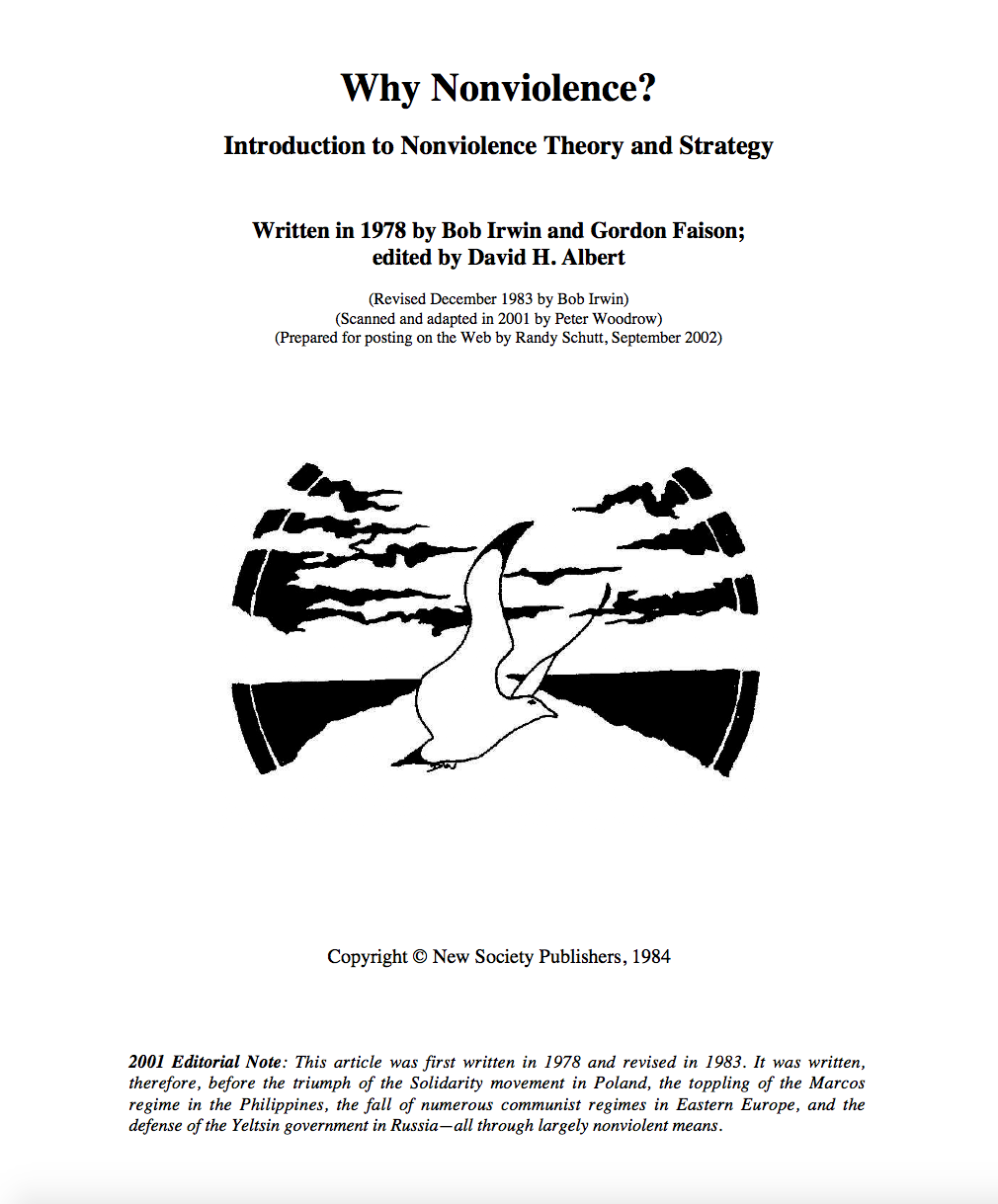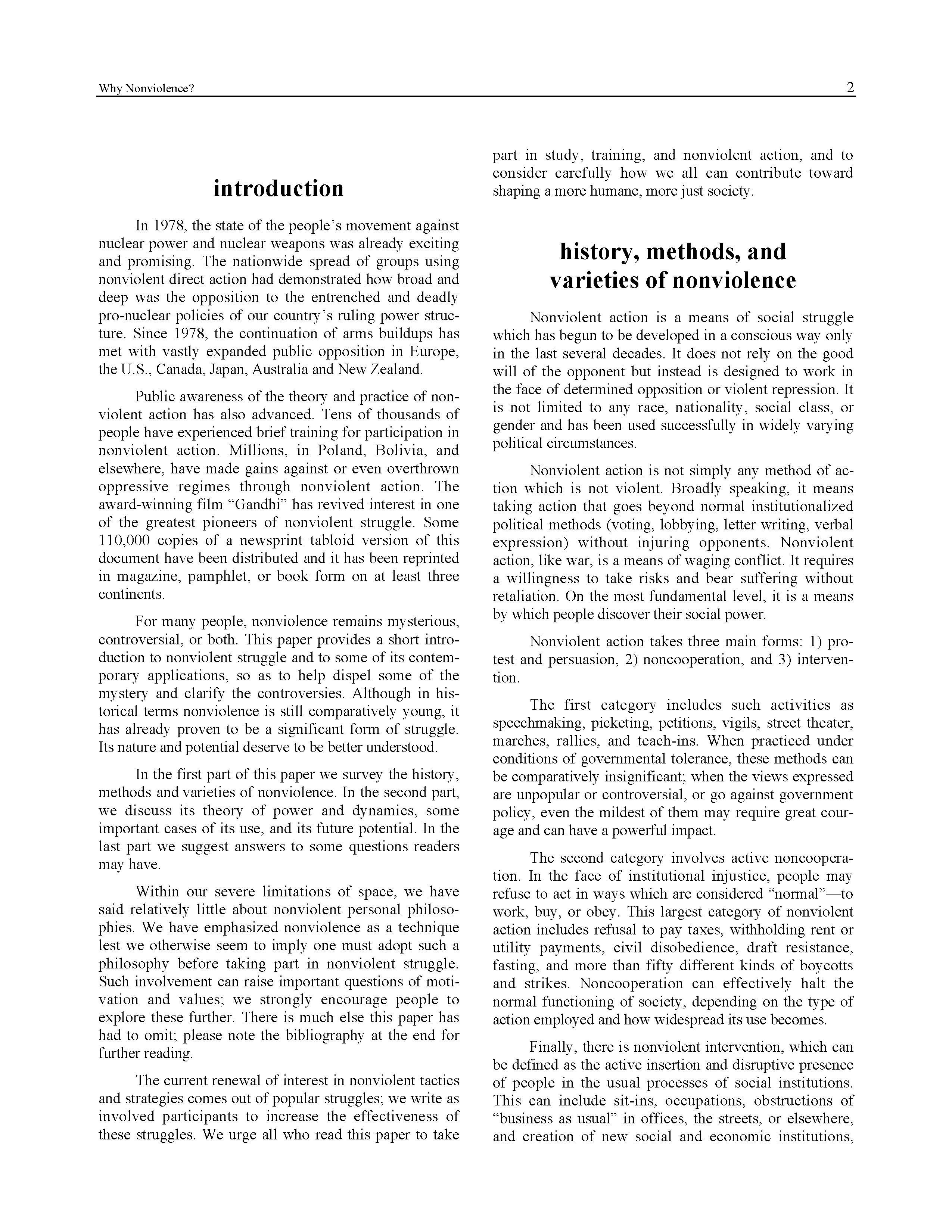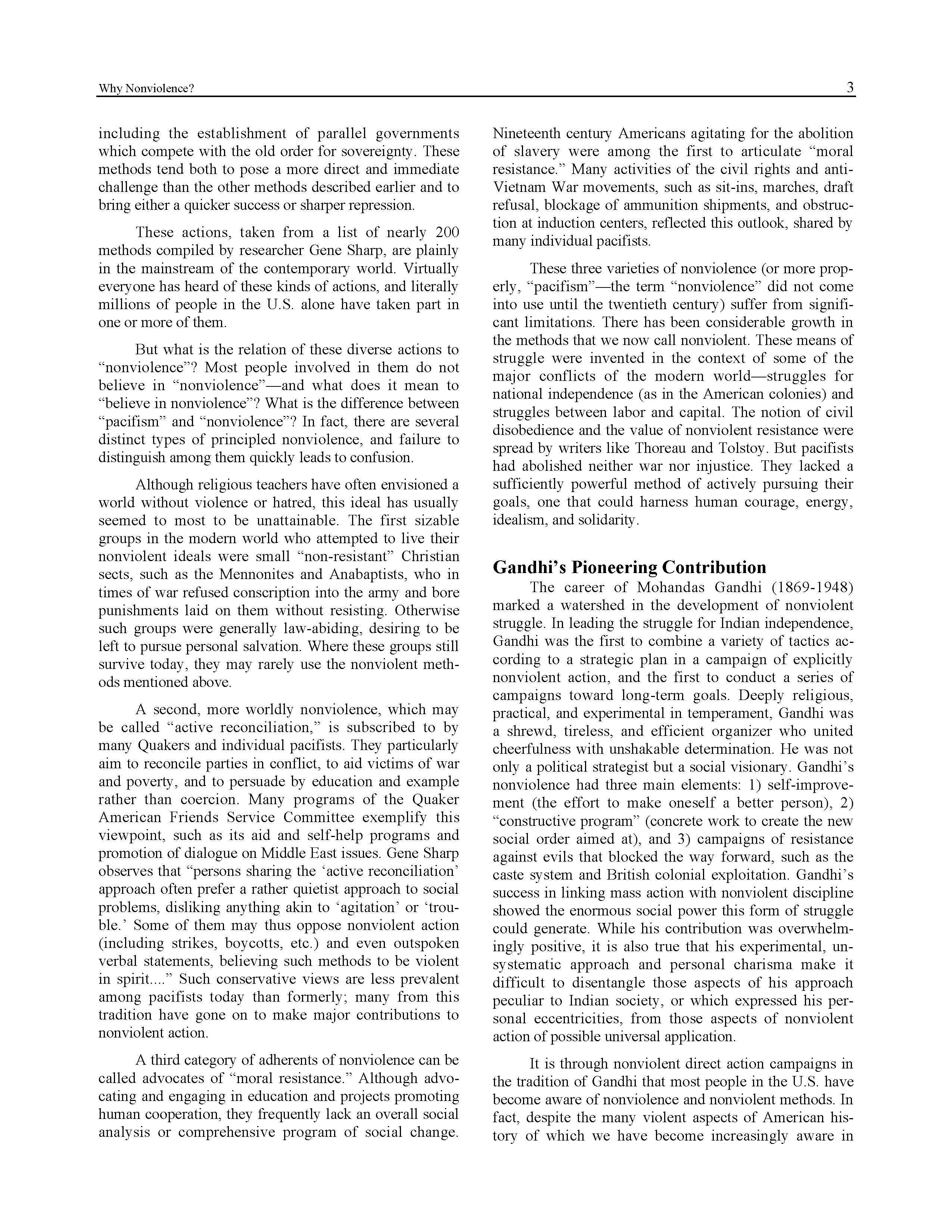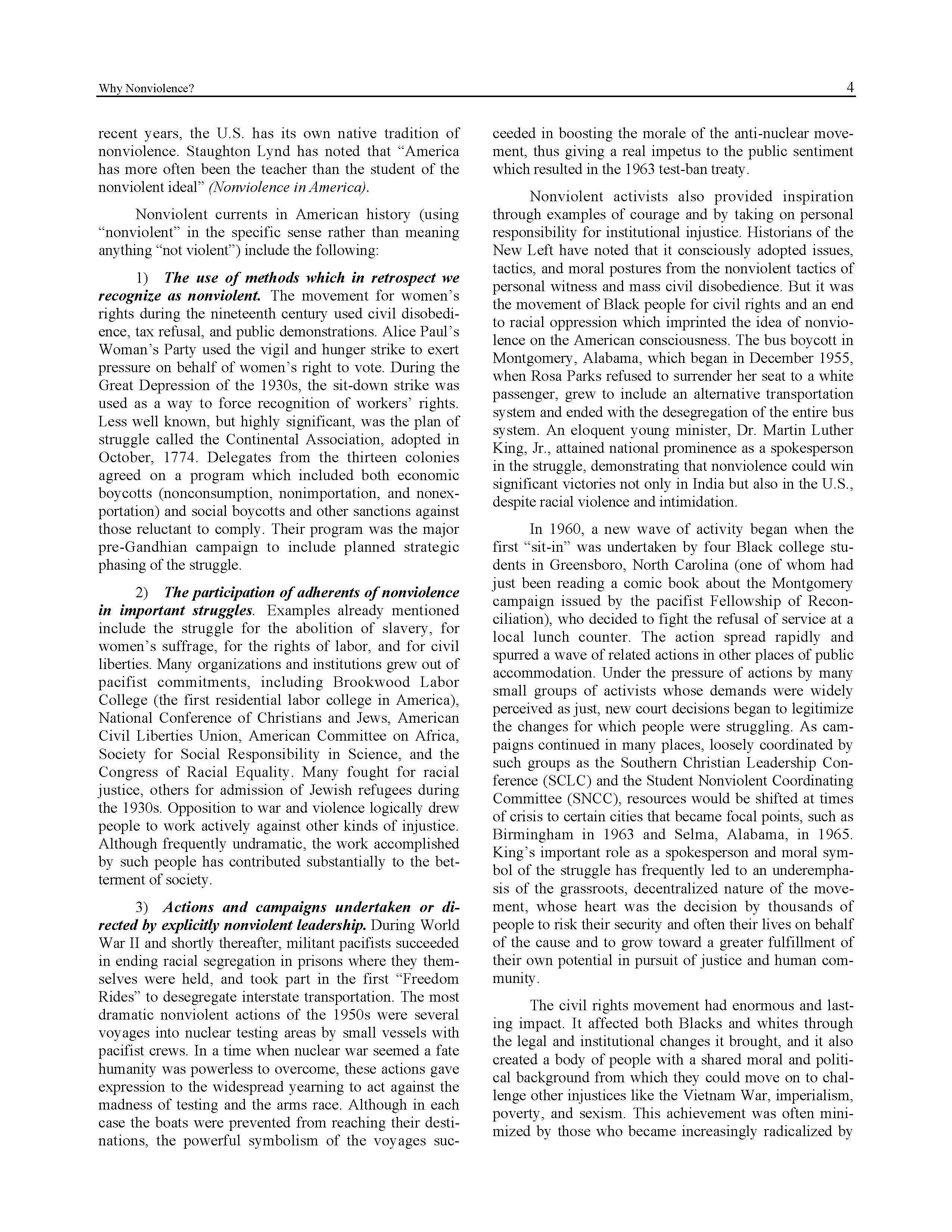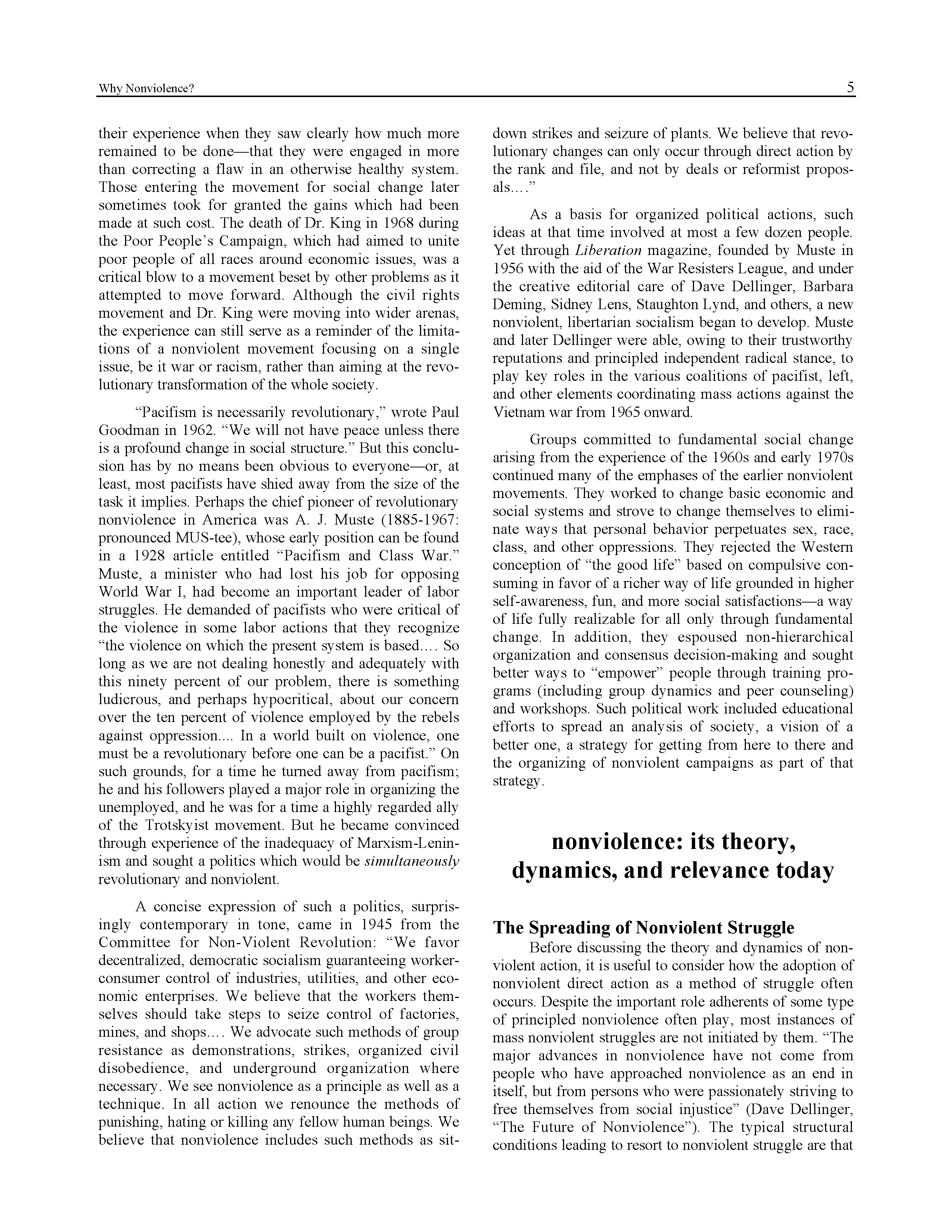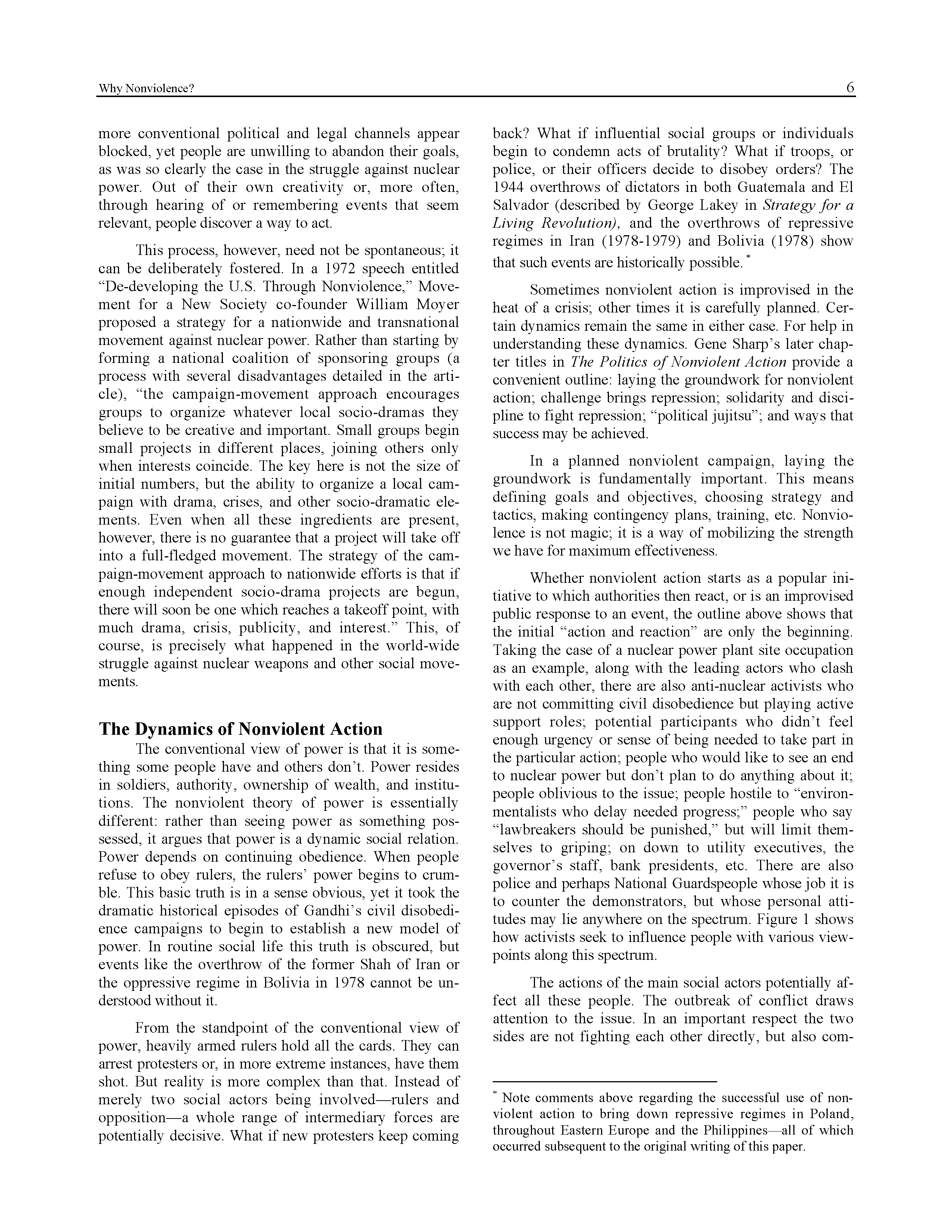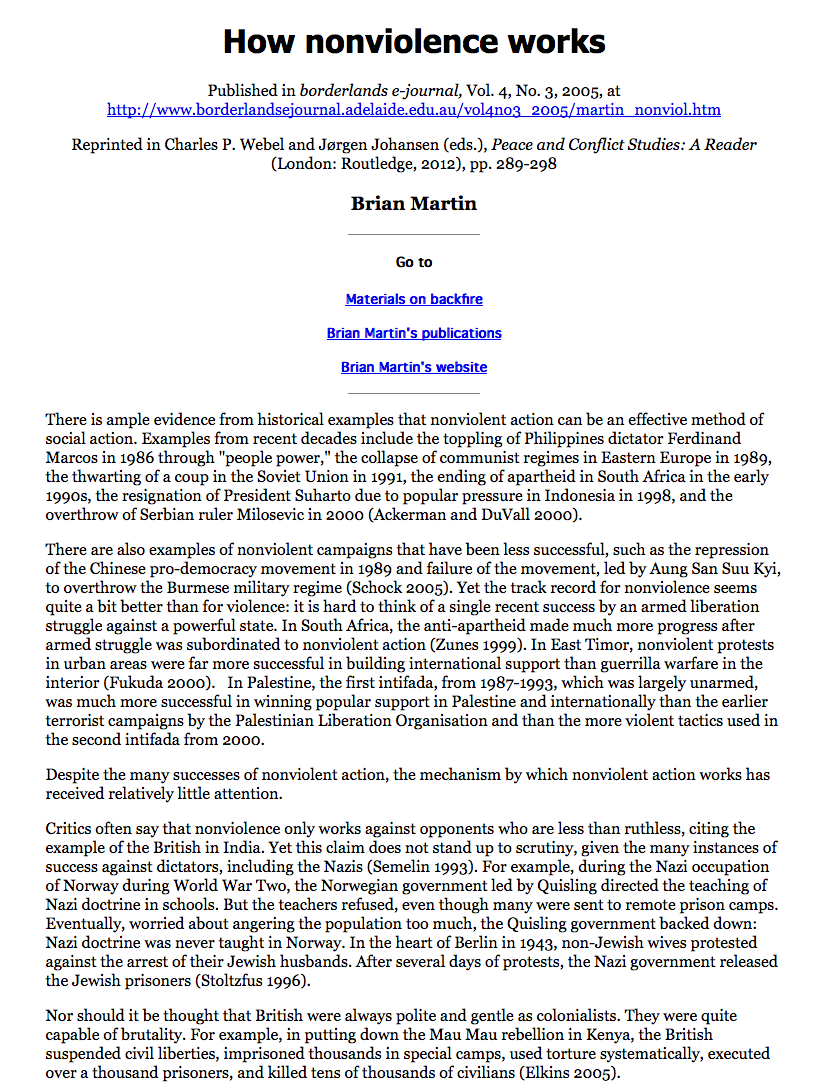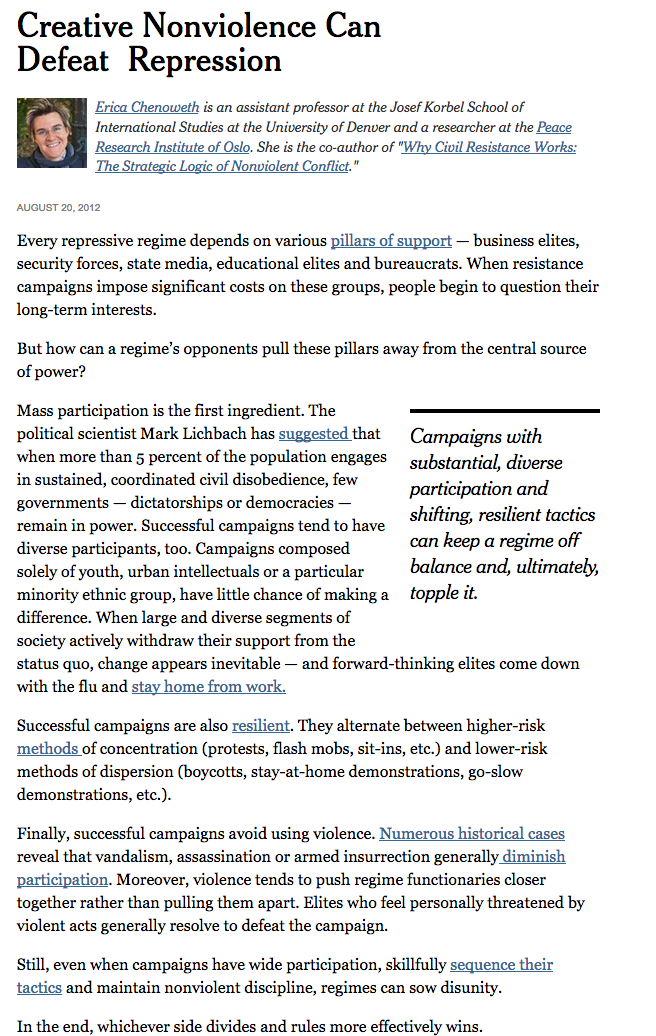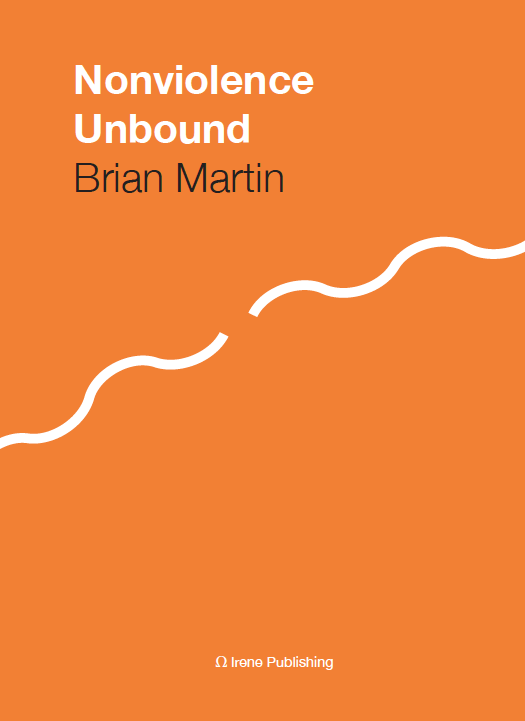Why Nonviolence? Introduction to Nonviolence Theory and Strategy
In the first part of this paper we survey the history, methods and varieties of nonviolence. In the second part, we discuss its theory of power and dynamics, some important cases of its use, and its future potential. In the last part we suggest answers to some questions readers may have.
2001 Editorial Note: This article was first written in 1978 and revised in 1983. It was written, therefore, before the triumph of the Solidarity movement in Poland, the toppling of the Marcos regime in the Philippines, the fall of numerous communist regimes in Eastern Europe, and the defense of the Yeltsin government in Russia—all through largely nonviolent means.
Editor: David H. Albert
New Society Publishers, 1984
Written in 1978, revised December 1983 by Bob Irwin, revised version published in 1984.
